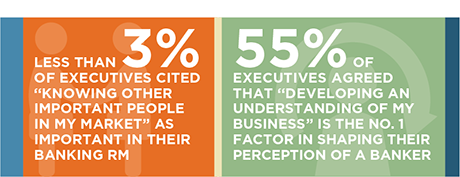
Despite the many changes in commercial banking over the past decade, the relationship manager remains the lynchpin of the relationship between companies and their banks. However, the nature of the RM role is changing along with the industry.
Company owners and executives who once valued their personal relationships and interactions with RMs are now taking a much more practical and in some ways transactional perspective. They value RMs today less for who they are or whom they know, but increasingly for what they know. They want RMs who provide insights and solutions that help grow the business or save the company time and/or money.
Meanwhile, data is permeating every aspect of the business, as high-powered analytics let banks equip their RMs with exactly the kind of knowledge, insights and solutions that clients and prospects want. Sophisticated IT systems allow banks to deliver this information to RMs quickly and at just the right time—namely, just prior to a sales call or meeting. Top-performing banks are also acquiring external data feeds that reveal information like companies’ current satisfaction and loyalty rates to current providers, allowing them to increase the efficiency of their sales function by pinpointing the highest value targets and allowing RMs to focus their efforts on their best opportunities.
Together, these changes are transforming the RM role. In this paper, we look at how that role is evolving, and how banks can utilize analytics and other information tools to dramatically increase the productivity and effectiveness of their RMs.
Although the emerging model is rooted in IT, we do not conclude that technology will replace human RMs any time soon. RMs capable of aggregating data and analytic insights into a compelling narrative about how a bank’s products can help solve companies’ problems will emerge as a critical competitive advantage.

